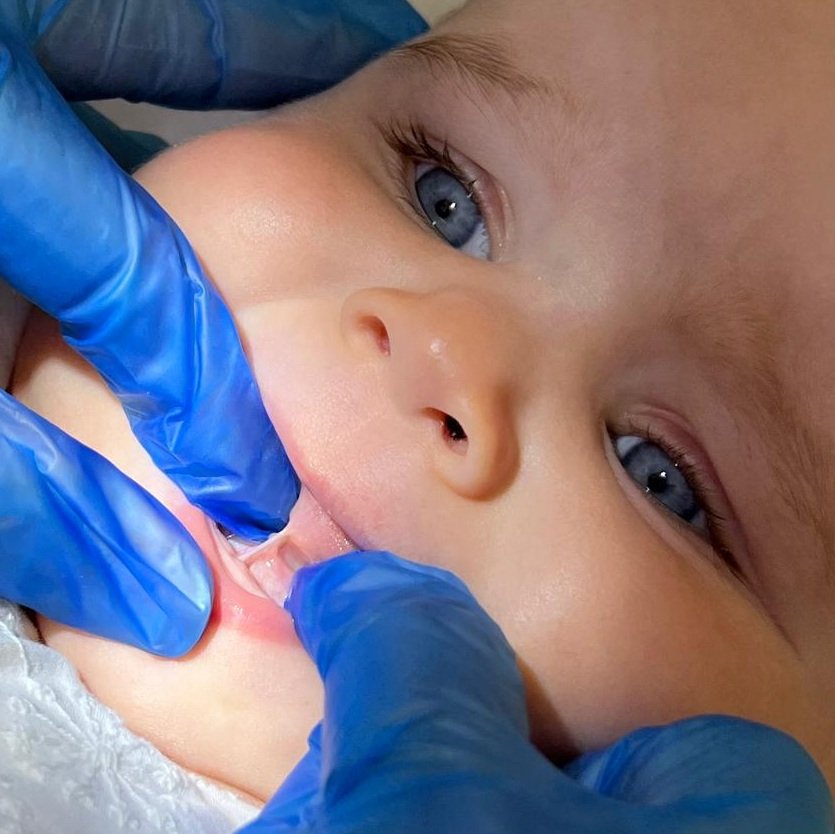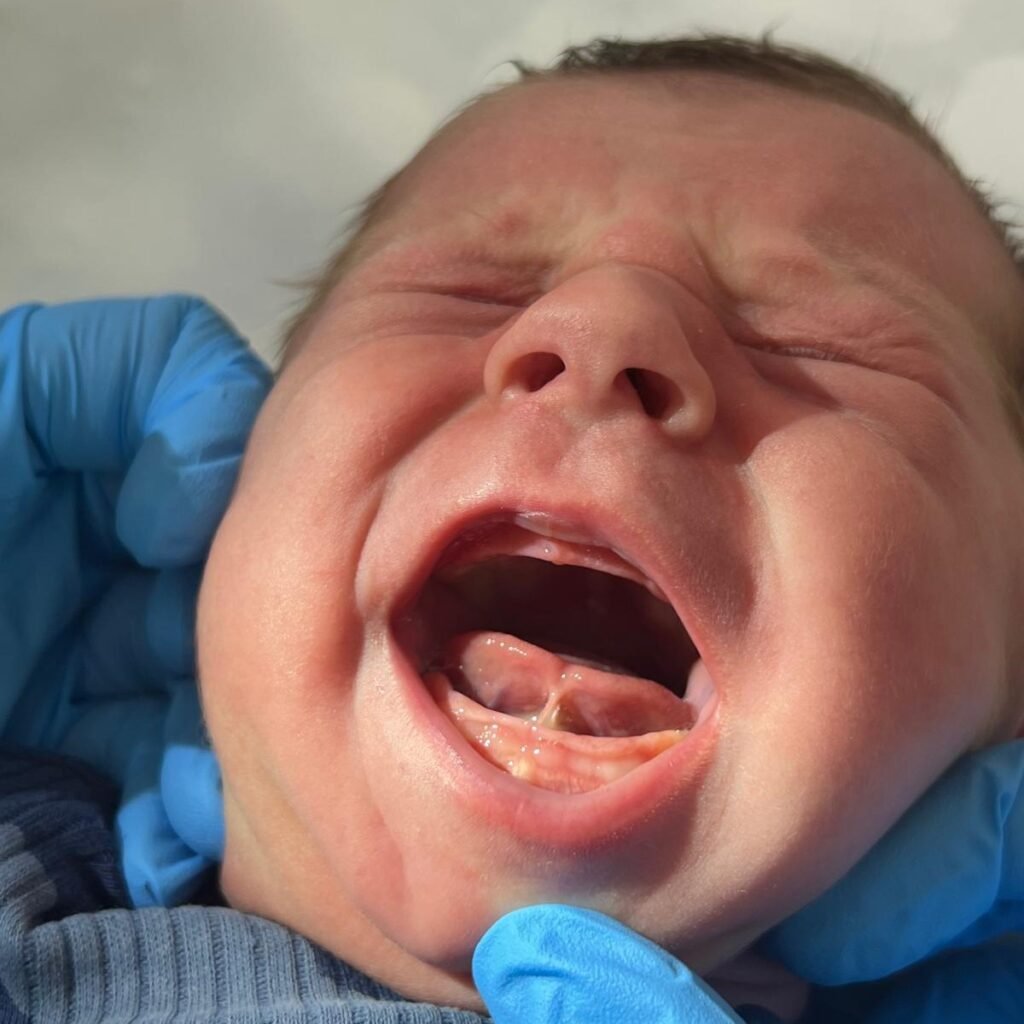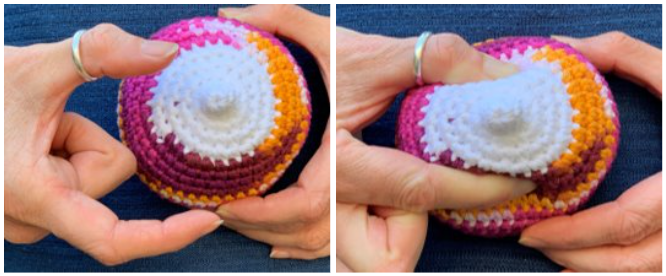Tongue-tie: It’s all about function
Most people have a lingual frenulum — the small stretchy membrane of tissue under the tongue — and its presence alone isn’t cause for concern.
A tongue-tie (ankyloglossia) is diagnosed only when:
- The frenulum is unusually short, thick, or tight AND It restricts tongue function — meaning the tongue can’t move as freely or effectively as it needs to
This is where confusion often arises. A visible frenulum doesn’t automatically equal a tongue-tie. Likewise, a baby with no obvious signs visually may still have significant restrictions that only become clear during functional assessment.
Diagnosis can’t be made just by “having a look” — especially not while baby is lying on an adult’s lap or via a video call. It requires a hands-on assessment of how the tongue actually moves, particularly during feeding.
Anterior vs posterior: What do the terms mean?
You might hear tongue-ties described as either ‘anterior’ or ‘posterior’ — and while this is useful shorthand, the labels don’t tell the full story.
Anterior tongue-tie
The frenulum is attached closer to the tip of the tongue, making it more visible. The tongue may appear heart-shaped, notched, or flat at the tip. These ties are often easier to identify visually, but still require functional confirmation.
Posterior tongue-tie
The restriction lies closer to where the tongue attaches to the floor of the mouth. These ties may be less visible, but functional assessment can reveal significant restriction.
Just because a frenulum is very visible, it does not mean it’s a tongue-tie. It’s only a tongue-tie if it limits movement and impacts function.



When is treatment appropriate?
Tongue-tie affects an estimated 5–10% of the population, but not all babies with a tongue-tie need treatment.
Treatment is considered when:
- There are clear feeding difficulties (breast or bottle)
- Functional restriction is confirmed during assessment
Common indicators include:
- Shallow or ineffective latch
- Clicking, slipping off, or frequent unlatching
- Long feeds with poor weight gain
- Excessive gassiness or unsettled behaviour during/after feeds
- Breastfeeding pain or nipple trauma
Even when challenges are present, it’s essential to assess feeding holistically and rule out other contributing factors. Treatment should never be based on visual appearance alone.
The Role of Assessment
Any referral for tongue-tie release should follow a comprehensive, in-person assessment carried out by a trained and experienced Tongue-tie Practitioner.
This assessment includes:
- A full feeding history
- Observation of a feed (either breast or bottle)
- Digital examination of the tongue using a gloved finger
- Consideration of maternal or parental symptoms
Only then can an informed, evidence-based decision be made about whether a release is appropriate.
Your role as a Perinatal Professional
As an Infant Feeding Coach™, Midwife, Doula, or other Perinatal Practitioner, your role is not to diagnose — but your support is crucial in:
- Identifying feeding challenges and red flags
- Educating families about what tongue-tie is (and isn’t)
- Helping parents feel heard and supported
- Making timely referrals to an appropriate professional
If you suspect a tongue-tie may be impacting feeding, you can play a vital part by holding space for families, offering evidence-informed explanations, and signposting to qualified Tongue-tie Practitioners when needed.
Final thoughts
A frenulum is part of normal anatomy and only a concern when it impacts function.
With the right training and referral pathways, you don’t need to be the expert — but you can be a trusted guide. By understanding the fundamentals of tongue-tie and how it presents in real-life feeding scenarios, you’re better equipped to support families with confidence, compassion, and clarity.
Next Steps
If you want to better support families in your care, you can join our ‘Supporting Families with Infant Tongue-tie’ Certificate, to you can train to physically assess infant tongue function with our Tongue-tie Assessor Award.
To find out more, get in touch info@theinfantfeedingacademy.co.uk




